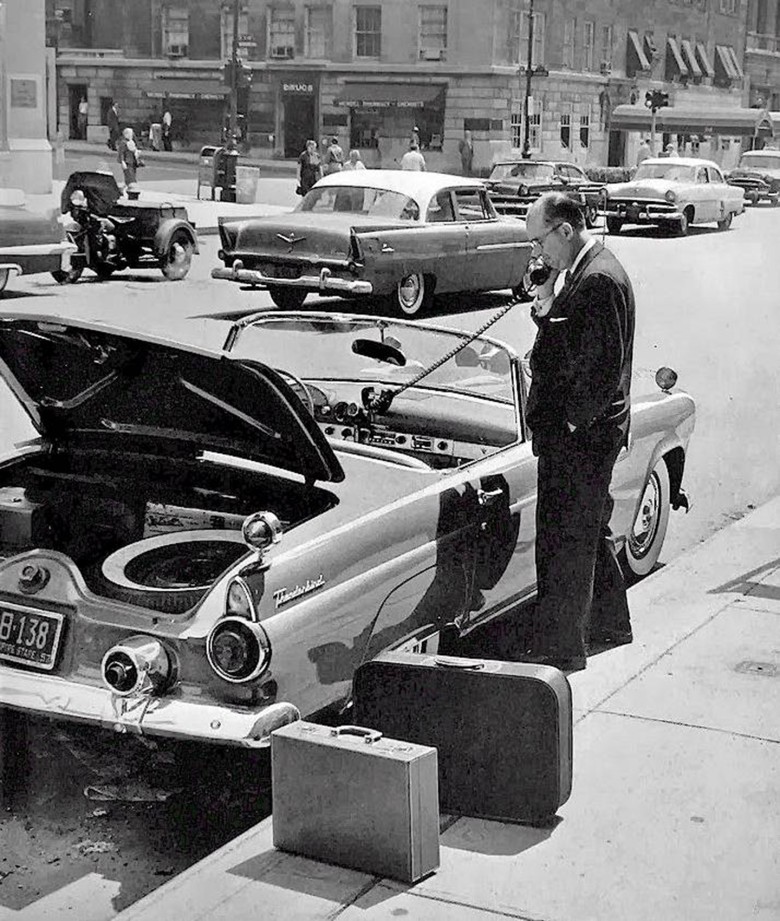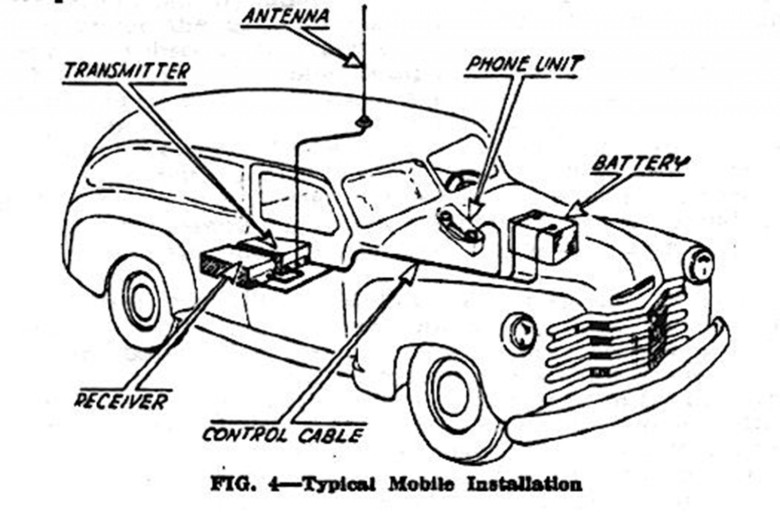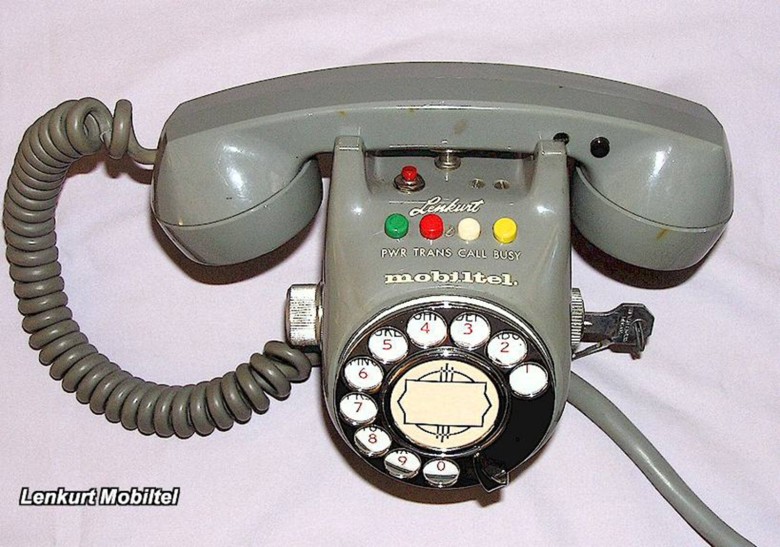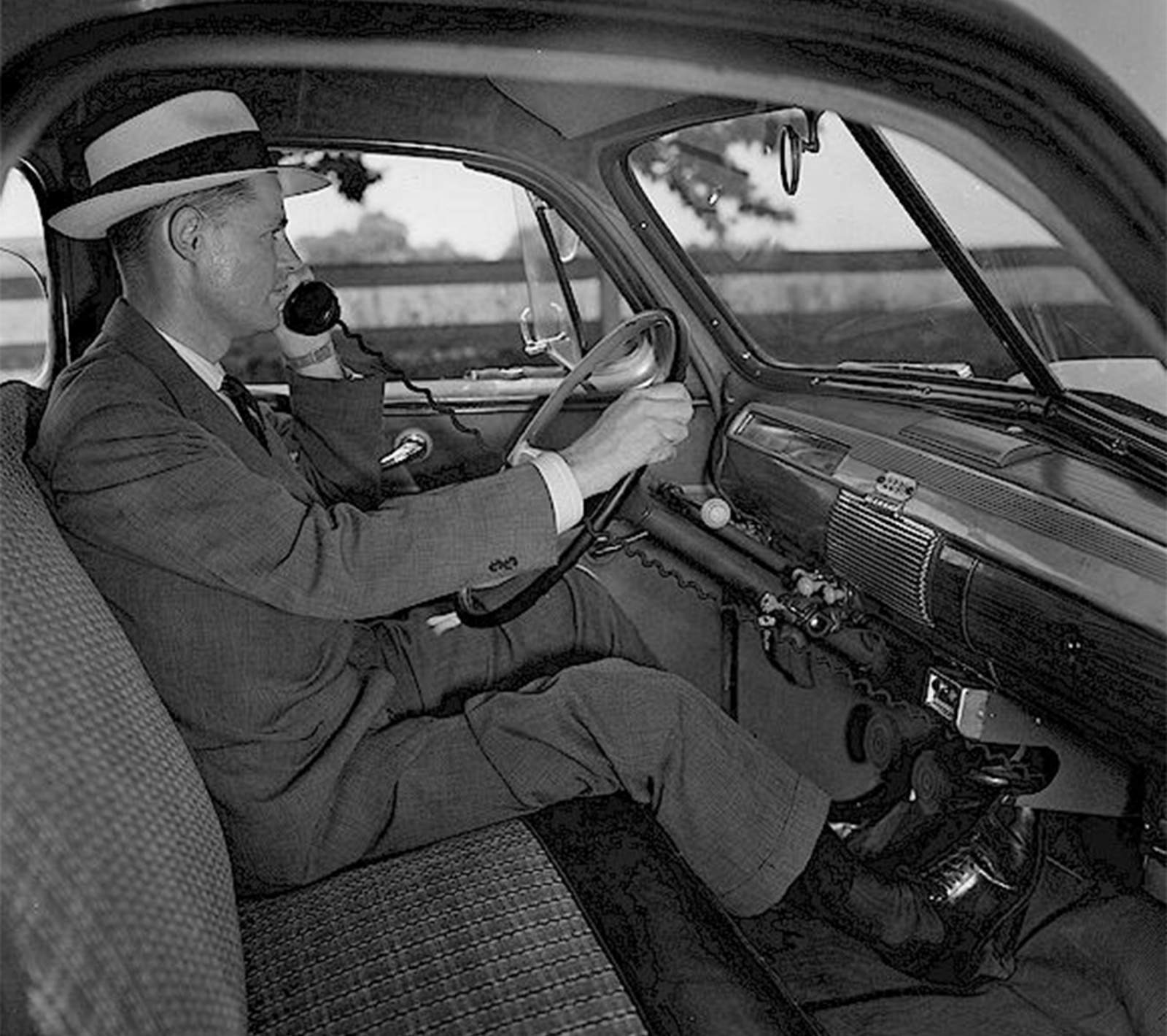When Lars Magnus Ericsson installed a telephone in his car, he proved you could communicate from the road. But while the first mobile phone was indeed mobile, it was anything but simple to use.
 Ericsson drove around Sweden and, when it was time to place a call, he would pull off to the side of the road next to telephone poles. Then his wife, Hilda, would take out two long sticks and hook them over a pair of telephone wires. Ericsson would then crank a handle on the phone to get a signal from the operator.
Ericsson drove around Sweden and, when it was time to place a call, he would pull off to the side of the road next to telephone poles. Then his wife, Hilda, would take out two long sticks and hook them over a pair of telephone wires. Ericsson would then crank a handle on the phone to get a signal from the operator.
Pretty slick for 1910.
It’s hard to look at today’s iPhone and see Ericsson’s car phone as part of the same technological lineage. But he demonstrated that telephones could travel with us. Like other forms of technology, each successive generation got smaller and smaller — and, eventually, smart.
Mobile phone history does not start with Martin Cooper’s brick phone for Motorola in the early 1980s. But the first mobile phones were only mobile because of all the heavy equipment, like batteries and a receiver, mounted in large cars and trucks.
If you were lucky, you had room in your trunk for a spare tire after the equipment was installed.

Photo courtesy Geoff Fors
In the 1940s, Bell Laboratories built a system based on the VHF FM police radio equipment by adding a handset. The phone used a decoder similar to those in a ship-to-shore radio, which sounded a bell whenever a call was placed to the vehicle’s unique number.
The handset was often mounted below the dash. There was an antenna, a battery underneath the hood, and a large, clunky transmitter and receiver in the trunk. Soon other companies developed car phone systems as well.

Illustration courtesy Geoff Fors
Bell and the Federal Communications Commission developed two kinds of service, highway and urban. The highway service followed major land and water routes around he United States and was intended for truckers and barge captains. There were 12 channels.
The urban system was for mobile subscribers who needed service within city limits. Among the first users of this system were doctors, delivery trucks, ambulances and newspaper reporters (get me rewrite!).
In 1948, urban service was available in 60 cities in the U.S. and Canada, with 4,000 users making about 117,000 calls per month, according to Geoff Fors, a telecommunications historian from California who has written extensively about these first mobile phones on his website. Highway service was available in 85 cities, with coverage along most major highways in the East and Midwest.

Photo courtesy Geoff Fors
By the 1950s, manufacturers like Motorola and General Electric developed operator-dialed service for cars. Self-dialing came later and other improvements included the use of transistors and miniature tubes that helped prolong battery life.
People weren’t exactly clamoring for car phones during this 20-year period. In the early years, there were just three radio channels, meaning just three customers could make telephone calls at one time.
Cost also worked as a deterrent: Fors said Pacific Telephone in 1972 charged $85 per month for the leased equipment, $25 per month for service and 50 cents per minute for air time. The cost per minute kept going up, Fors said. (Check out some 1960s car phone bills for an idea.)
“The public didn’t see the need for a car phone,” Fors told Cult of Mac. “There were pay phones everywhere and a mobile phone was so expensive that they were very rare.
“But if you had one, you were like a rock star. When I was in law school my roommate had a Lamborghini. We were both interested in the same girl. She went out with me instead and he was furious. He told me he had angrily said to her, ‘What is wrong with you? I have a Lamborghini and he just has that Chrysler. Why would you want to go out with him instead of me?’ She said, ‘Because he has a car telephone. I have never seen one of those before.'”
AT&T developed the Improved Mobile Telephone Service in the 1960s, bringing more channels and lighter-weight equipment, but the service was limited to 40,000 customers nationwide. Still, in New York City, 2,000 customers shared 12 channels and sometimes had to wait a half-hour to make a call.
“You were warned not to depend on it for anything in the nature of emergency services because the channels were usually always busy,” Fors said.
Car phone service became more popular in the 1970s with a new Car Radiophone service network built on technology that connected with the car’s battery and used signals attached to telephone networks. Higher-power transmitters and antennas were capable of superb call quality, but poor maintenance of the equipment could affect the quality, Fors said.
Analog cell service in 1984 and then digital service in the 1990s made personal cellphones affordable — and made the car phone nearly obsolete. Nokia and Motorola still make car phones for rural areas where digital signals are not available.
Tend to work from your car? Check out this clip from the 1954 movie Sabrina starring Humphrey Bogart. In it, he uses a car phone and a dictaphone that pops up from the floor.


